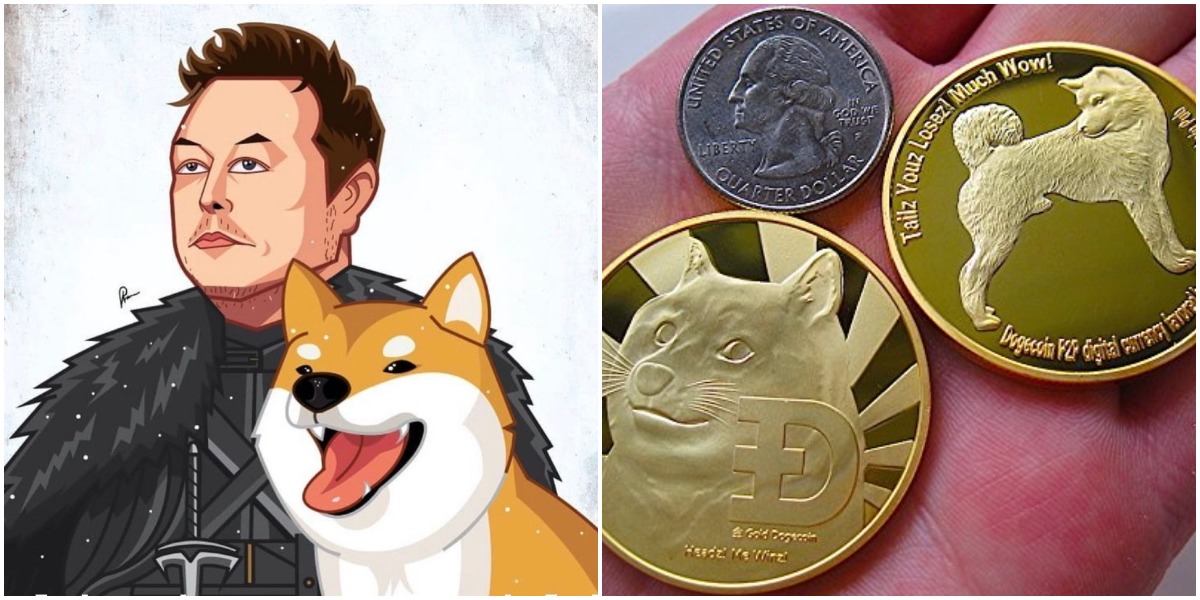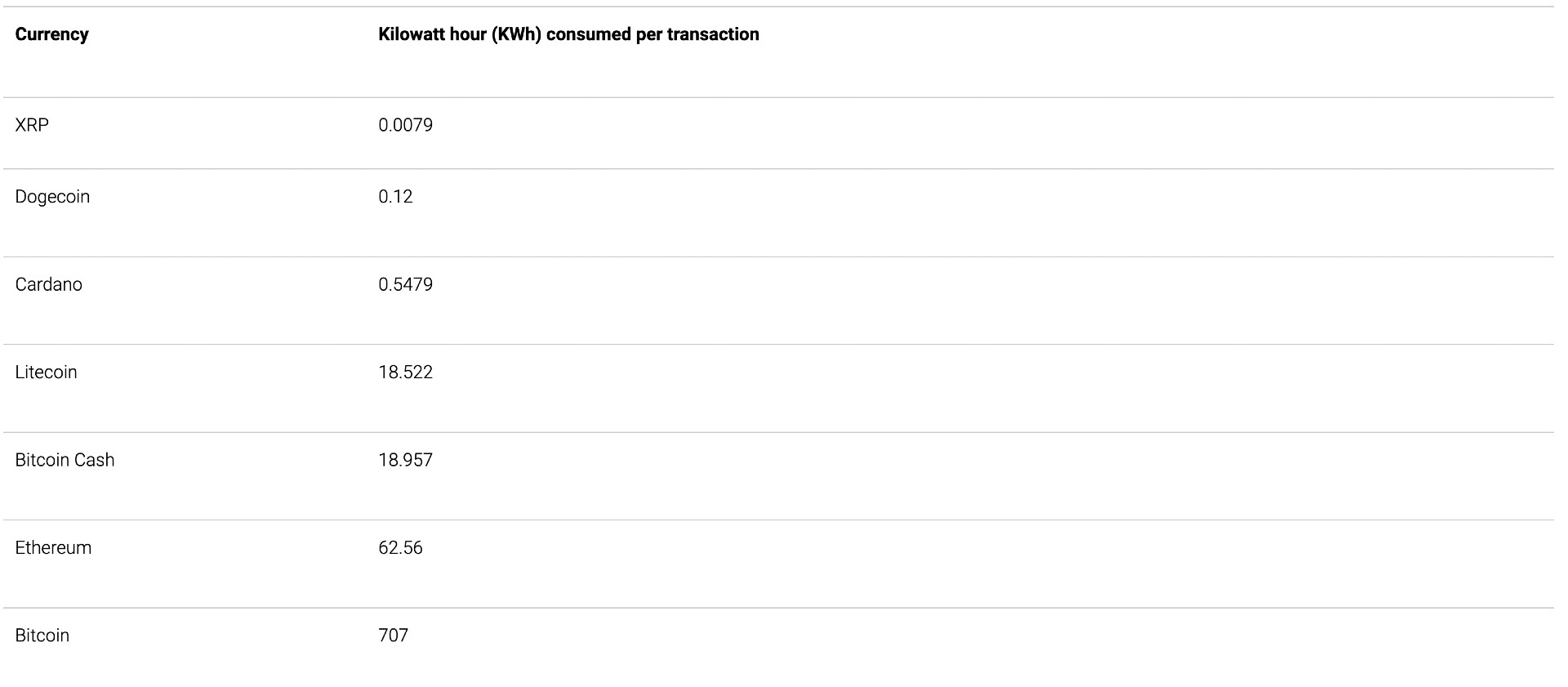

Investor's Corner
Tesla’s most-sustainable cryptocurrency options aren’t plentiful but they are ideal
Tesla’s options for a sustainable cryptocurrency to utilize for investments and transactions for its products are not available in plentiful numbers, but they are ideal to fit the automaker’s needs, environmental requirements, and company image.
Yesterday, CEO Elon Musk announced that Tesla would be eliminating the ability to purchase vehicles with Bitcoin after citing environmental challenges. “We are concerned about rapidly increasing use of fossil fuels for Bitcoin mining and transactions, especially coal, which has the worst emissions of any fuel,” Musk wrote in a Twitter post last night. “Cryptocurrency is a good idea on many levels, and we believe it has a promising future, but this cannot come at great cost to the environment.”
Energy usage trend over past few months is insane https://t.co/E6o9s87trw pic.twitter.com/bmv9wotwKe
— Elon Musk (@elonmusk) May 13, 2021
Tesla’s mission when it was established in 2003 was to “accelerate the transition to sustainable energy.” After producing all-electric powertrains since 2008 with the release of the original Tesla Roadster, the company has saved over 16.5 million tons of CO2 from being put into the atmosphere, helping move an automotive sector that gas powertrains have dominated since its establishment to more sustainable forms of passenger transportation. Tesla’s backsteps after choosing to invest and accept Bitcoin as a form of payment show that the company is still heavily focused on its business being Earth-friendly well before a car is put on the road. The entire production process, to payment, to delivery, to driving the vehicle itself, must be sustainable.
Typically, cryptocurrencies are not the most environmentally friendly option to use as a payment method. “Digital assets such as Bitcoin have a considerable environmental footprint due to the amount of energy required to power the algorithms behind them,” TRG Data Centers writes. “While this could theoretically be done using renewable energy, in reality, it usually isn’t. China is a leading player in mining for Bitcoin, and 60% of the energy it uses to do so is powered by coal.”
While Bitcoin mining may not be the most sustainable option, other cryptos use a fraction of the energy, and Dogecoin is one of them. Musk detailed that cryptocurrencies are undoubtedly still in the company’s future plans. Tesla will only utilize cryptocurrencies that use less than 1% of the energy required by Bitcoin.
According to research from TRG, several cryptocurrencies utilize significantly less energy than Bitcoin does. It is estimated that Bitcoin requires 707 kilowatt-hours of energy per transaction, meaning Tesla would only consider a handful of options based on the research. These include XRP, known as Ripple (.0079 KWh per transaction), Dogecoin, a personal favorite of Elon Musk’s (.12 KWh per transaction), and Cardan (.5479 per transaction).
Credit: TRG Data Centers
It appears that there are several options on the table. While Ripple is a relatively popular crypto, Dogecoin would likely be the primary coin that Tesla would choose to use just based on the company’s history with it. Recently, Musk surveyed his Twitter followers to ask if Tesla should accept Dogecoin as a payment method, and the results were widely accepting of the idea.
Of course, Tesla could choose to accept several different cryptocurrencies in return for its products. However, there will likely not be an answer to this question soon as Tesla could do extensive research to figure out which option aligns with the company’s sustainability goals the best.
What do you think? Let us know in the comments below or email me at joey@teslarati.com. You can also reach me on Twitter @KlenderJoey.
H/t: @Pinoy on Twitter

Investor's Corner
Tesla stock closes at all-time high on heels of Robotaxi progress

Tesla stock (NASDAQ: TSLA) closed at an all-time high on Tuesday, jumping over 3 percent during the day and finishing at $489.88.
The price beats the previous record close, which was $479.86.
Shares have had a crazy year, dipping more than 40 percent from the start of the year. The stock then started to recover once again around late April, when its price started to climb back up from the low $200 level.
This week, Tesla started to climb toward its highest levels ever, as it was revealed on Sunday that the company was testing driverless Robotaxis in Austin. The spike in value pushed the company’s valuation to $1.63 trillion.
Tesla Robotaxi goes driverless as Musk confirms Safety Monitor removal testing
It is the seventh-most valuable company on the market currently, trailing Nvidia, Apple, Alphabet (Google), Microsoft, Amazon, and Meta.
Shares closed up $14.57 today, up over 3 percent.
The stock has gone through a lot this year, as previously mentioned. Shares tumbled in Q1 due to CEO Elon Musk’s involvement with the Department of Government Efficiency (DOGE), which pulled his attention away from his companies and left a major overhang on their valuations.
However, things started to rebound halfway through the year, and as the government started to phase out the $7,500 tax credit, demand spiked as consumers tried to take advantage of it.
Q3 deliveries were the highest in company history, and Tesla responded to the loss of the tax credit with the launch of the Model 3 and Model Y Standard.
Additionally, analysts have announced high expectations this week for the company on Wall Street as Robotaxi continues to be the focus. With autonomy within Tesla’s sights, things are moving in the direction of Robotaxi being a major catalyst for growth on the Street in the coming year.
Elon Musk
Tesla needs to come through on this one Robotaxi metric, analyst says
“We think the key focus from here will be how fast Tesla can scale driverless operations (including if Tesla’s approach to software/hardware allows it to scale significantly faster than competitors, as the company has argued), and on profitability.”

Tesla needs to come through on this one Robotaxi metric, Mark Delaney of Goldman Sachs says.
Tesla is in the process of rolling out its Robotaxi platform to areas outside of Austin and the California Bay Area. It has plans to launch in five additional cities, including Houston, Dallas, Miami, Las Vegas, and Phoenix.
However, the company’s expansion is not what the focus needs to be, according to Delaney. It’s the speed of deployment.
The analyst said:
“We think the key focus from here will be how fast Tesla can scale driverless operations (including if Tesla’s approach to software/hardware allows it to scale significantly faster than competitors, as the company has argued), and on profitability.”
Profitability will come as the Robotaxi fleet expands. Making that money will be dependent on when Tesla can initiate rides in more areas, giving more customers access to the program.
There are some additional things that the company needs to make happen ahead of the major Robotaxi expansion, one of those things is launching driverless rides in Austin, the first city in which it launched the program.
This week, Tesla started testing driverless Robotaxi rides in Austin, as two different Model Y units were spotted with no occupants, a huge step in the company’s plans for the ride-sharing platform.
Tesla Robotaxi goes driverless as Musk confirms Safety Monitor removal testing
CEO Elon Musk has been hoping to remove Safety Monitors from Robotaxis in Austin for several months, first mentioning the plan to have them out by the end of 2025 in September. He confirmed on Sunday that Tesla had officially removed vehicle occupants and started testing truly unsupervised rides.
Although Safety Monitors in Austin have been sitting in the passenger’s seat, they have still had the ability to override things in case of an emergency. After all, the ultimate goal was safety and avoiding any accidents or injuries.
Goldman Sachs reiterated its ‘Neutral’ rating and its $400 price target. Delaney said, “Tesla is making progress with its autonomous technology,” and recent developments make it evident that this is true.
Investor's Corner
Tesla gets bold Robotaxi prediction from Wall Street firm
Last week, Andrew Percoco took over Tesla analysis for Morgan Stanley from Adam Jonas, who covered the stock for years. Percoco seems to be less optimistic and bullish on Tesla shares, while still being fair and balanced in his analysis.

Tesla (NASDAQ: TSLA) received a bold Robotaxi prediction from Morgan Stanley, which anticipates a dramatic increase in the size of the company’s autonomous ride-hailing suite in the coming years.
Last week, Andrew Percoco took over Tesla analysis for Morgan Stanley from Adam Jonas, who covered the stock for years. Percoco seems to be less optimistic and bullish on Tesla shares, while still being fair and balanced in his analysis.
Percoco dug into the Robotaxi fleet and its expansion in the coming years in his latest note, released on Tuesday. The firm expects Tesla to increase the Robotaxi fleet size to 1,000 vehicles in 2026. However, that’s small-scale compared to what they expect from Tesla in a decade.
Tesla expands Robotaxi app access once again, this time on a global scale
By 2035, Morgan Stanley believes there will be one million Robotaxis on the road across multiple cities, a major jump and a considerable fleet size. We assume this means the fleet of vehicles Tesla will operate internally, and not including passenger-owned vehicles that could be added through software updates.
He also listed three specific catalysts that investors should pay attention to, as these will represent the company being on track to achieve its Robotaxi dreams:
- Opening Robotaxi to the public without a Safety Monitor. Timing is unclear, but it appears that Tesla is getting closer by the day.
- Improvement in safety metrics without the Safety Monitor. Tesla’s ability to improve its safety metrics as it scales miles driven without the Safety Monitor is imperative as it looks to scale in new states and cities in 2026.
- Cybercab start of production, targeted for April 2026. Tesla’s Cybercab is a purpose-built vehicle (no steering wheel or pedals, only two seats) that is expected to be produced through its state-of-the-art unboxed manufacturing process, offering further cost reductions and thus accelerating adoption over time.
Robotaxi stands to be one of Tesla’s most significant revenue contributors, especially as the company plans to continue expanding its ride-hailing service across the world in the coming years.
Its current deployment strategy is controlled and conservative to avoid any drastic and potentially program-ruining incidents.
So far, the program, which is active in Austin and the California Bay Area, has been widely successful.








